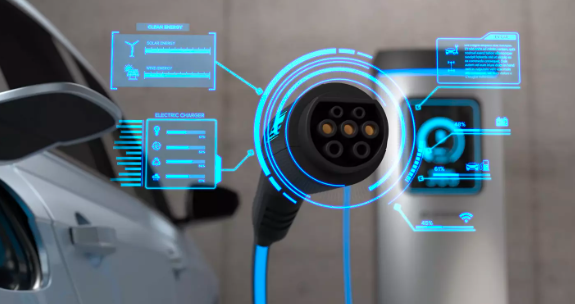Electric vehicle charger manufacturers: Pioneers of the E-Mobility Revolution

As more countries pledge to reduce carbon emissions and transition toward sustainable energy, electric vehicles (EVs) are becoming central to the future of mobility. However, this revolution is not just about electric cars—it is powered equally by the infrastructure that supports them. At the heart of this infrastructure lie electric vehicle charger manufacturers, who are engineering the systems that keep EVs running efficiently, safely, and sustainably.
This article explores the critical role of electric vehicle charger manufacturers, their innovations, challenges, and how they are accelerating the world’s transition to cleaner transportation.
The Backbone of EV Infrastructure
While automakers are celebrated for producing sleek, efficient electric vehicles, the supporting infrastructure—particularly chargers—is essential for widespread adoption. Without reliable charging systems, even the most advanced EVs would struggle to find a place in everyday transportation.
electric vehicle charger manufacturers are responsible for designing and producing chargers that meet the varying needs of consumers, businesses, and governments. From home wall boxes to superfast highway chargers, these manufacturers ensure that energy can be delivered safely and consistently to EVs of all types.
Categories of EV Chargers Developed by Manufacturers
To serve the diverse EV market electric vehicle charger manufacturers produce a wide array of charging systems:
1. AC Chargers (Level 1 and Level 2)
. Level 1 chargers plug into standard outlets and offer slow charging, while Level 2 chargers use 240V outlets to deliver faster charging, ideal for overnight use.
2. DC Fast Chargers (Level 3)
Designed for public and commercial use, these chargers can recharge an EV up to 80% in 20 to 40 minutes.
3. Ultra-Fast and High-Power Chargers
Some electric vehicle charger manufacturers now offer ultra-fast chargers that deliver 150–350 kW, capable of adding hundreds of miles of range in less than 30 minutes.
4. Portable Chargers
Manufacturers are also developing portable chargers for emergency use or areas where fixed charging infrastructure isn’t available.
5. Wireless Chargers
Though still in the early stages of adoption, inductive or wireless charging systems are being explored for personal and commercial use, offering a cable-free experience.
See also: A Practical Guide to Acoustic Foam Soundproofing
How electric vehicle charger manufacturers Drive Innovation
Innovation is at the core of what electric vehicle charger manufacturers do. As electric vehicles continue to evolve, so too must the technologies that power them. Key areas of innovation include:
– Smart Charging Systems
Chargers today come equipped with internet connectivity, allowing users to schedule charging during off-peak hours, monitor energy usage, and receive updates via mobile apps.
– Vehicle-to-Grid (V2G) Integration
Some chargers now support V2G technology, which allows EVs to supply energy back to the grid. This bidirectional charging model contributes to grid stability and supports renewable energy management.
– Solar and Renewable Integration
Manufacturers are integrating solar panels and battery storage systems with charging stations, allowing for clean, off-grid energy supply in homes and public locations.
– Modular and Scalable Design
For commercial applications, modular chargers can be scaled up easily to meet growing demand, reducing installation time and cost.
– North America
Manufacturers in the U.S. are benefiting from federal initiatives such as the National Electric Vehicle Infrastructure (NEVI) program, which supports the deployment of a national network of EV chargers.
– Europe
The EU’s Green Deal and Fit for 55 packages are accelerating charger deployment across member states, with mandates requiring charging infrastructure in new buildings and public facilities.
– Asia-Pacific
India, Japan, and South Korea are also ramping up efforts to meet their growing EV markets.
Challenges Faced by electric vehicle charger manufacturers
Despite massive growth, electric vehicle charger manufacturers face several industry-wide challenges:
– Standardization Issues
Multiple charging standards—such as CCS, CHAdeMO, Tesla Superchargers, and GB/T—make it difficult for manufacturers to develop universal products. Regional preferences and policies further complicate compatibility.
– Grid Limitations
The rapid expansion of high-power chargers is putting pressure on electrical grids. Manufacturers must incorporate load balancing and energy management systems to avoid blackouts and overloads.
– Environmental Concerns
Although EVs are greener than fossil-fueled vehicles, the production and disposal of charging stations, especially their batteries and electronics, must be managed responsibly to avoid new environmental challenges.
Conclusion
The rise of electric vehicles marks one of the most significant shifts in the history of mobility—and electric vehicle charger manufacturers are at the forefront of this transformation. By designing and producing advanced, efficient, and scalable charging systems, they are enabling individuals, businesses, and governments to move toward cleaner, smarter transportation.
Their efforts not only support EV drivers but also contribute directly to global goals for climate action and energy transition. As infrastructure grows and technology advances, the work of electric vehicle charger manufacturers will become even more essential to building the connected, carbon-free future the world envisions.
.




